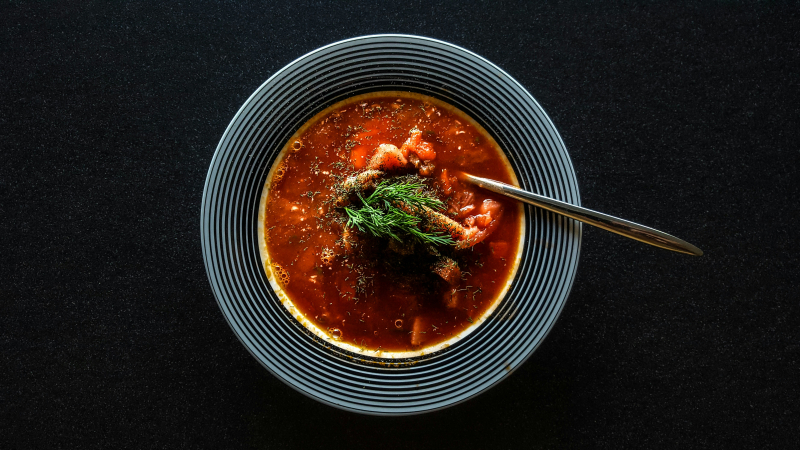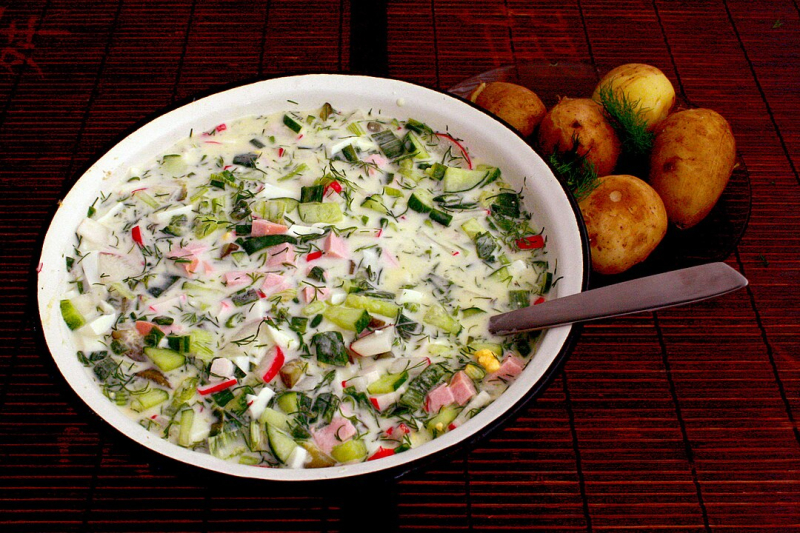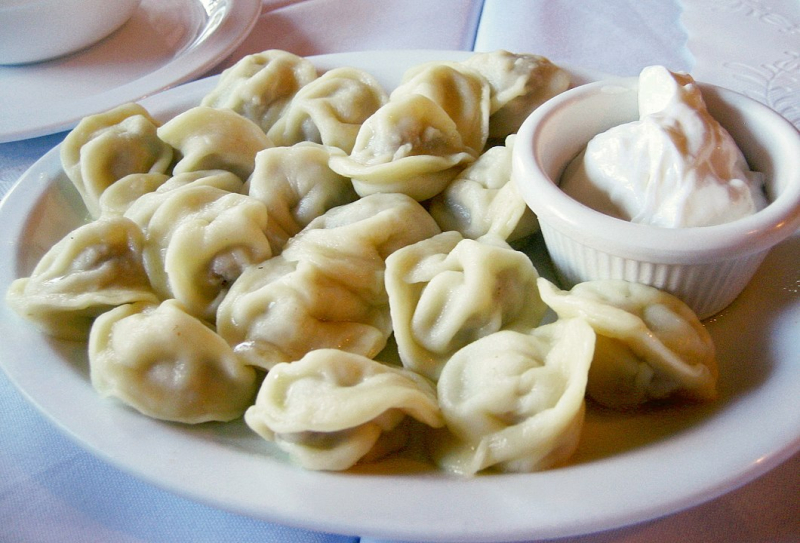Bachelor's student
Top Traditional Russian Food To Try for Foreigners: My Personal Experience
Personally, I am a huge fan of trying interesting new foods from different cultures. And so, coming to Russia opened up a huge opportunity for tasting dishes I've never had before. Very exciting! I’ve compiled a list of the essential traditional Russian dishes that I enjoyed, that I recommend you to try and judge for yourself.

To start, I learned that in Russia, there is a big emphasis on the order of dishes served. In Russian, they are called "first, second and third." "First" or первое is the appetizer: generally soup or a salad. "Second" or второе is the main dish: this is most commonly a meat dish paired with a side dish, called гарнир (pronounced "garneer"). "Third" or третье is dessert and drinks.
In this first part of my blog, I’ll cover the "first and second'' dishes. In the second half of the blog, linked below, I’ll go over my personal favorites: dessert and drinks, as well as some suggestions where to find these foods in Russia. And now, let’s get right into it.
Here are some staples, starting from the appetizers:
-
The world-famous borscht — a red soup made out of beets, meat, and vegetables. There are as many variations of this soup as there are personal preferences, but it is typically served with sour cream. It doesn't stand out to me as something extraordinary, but borscht is definitely great as a homemade meal.

-
Okróshka — a soup usually served cold. It consists of mostly vegetables, including boiled potatoes and eggs. I found this soup to be incredibly unique, like nothing I've ever had before. It can be based on either kefir (a specific fermented Russian drink similar to yogurt) or kvass, another extremely distinctive drink that I'll get into a bit later. Don't let the interesting mixture of ingredients put you off — this soup is very popular for a reason! I prefer the version with kefir, the one with kvass is a little bit too unusual for me.

-
Shchi — a sour cabbage soup, which is a bit similar to borscht. It can be made with either sauerkraut or regular cabbage. Despite the spelling, its name is pronounced something like "shchee." I absolutely adore the sourness of the soup; the Russians are definitely onto something here.
-
Olivier — a staple of the Russian New Year’s feast. Moving on to salads, this one is so popular, you can find it in some other European countries as well. Olivier is made with a mixture of many different vegetables, potatoes, and meat as well as mayonnaise. Similar to borscht, this salad doesn't stand out too much to me, but it is tasty.
-
Dressed herring — a salad with a fun name in Russian, literally translating to "herring under a fur coat." It’s called so as it is a layered salad, with herring as the bottom layer, and a "coat" of the other ingredients covering it. Since I’m not a huge fan of onion, I can only eat this salad after removing it. If you’re not a fan of beets or the strong taste of fish, this salad is not for you.
Moving on to the main courses, there are a variety of options. A lot of them, while traditionally Russian, can be found in other cuisines as well. For example, Russian meat cutlets have equivalents around the world. Also, shashliki, or meat kebabs, while delicious, taste very similar to barbecue and other grilled meat. I would, of course, still highly recommend trying them, but if you’re visiting Russia for a short time, I would go for the more unique dishes first.
The two main dishes that stood out to me were:
-
Pelmeni — while these Russian dumplings are very similar to the dumplings found in many different cultures, they have a counterpart called vareniki, which are filled with jams, mushrooms, potatoes, and more. I absolutely love how many variations are out there, and how easy they are to cook.

-
Buckwheat — a side dish made from a grain very similar to wheat. Buckwheat is incredibly nutritious and filling. It’s a staple of the Russian diet! Personally, I consider buckwheat by itself a bit bland, but it is much more appetizing when paired with meat or a sauce. I can only eat it with ketchup, to the disdain of my Russian friends.
Here’re a few recipes if you want to try making these dishes yourself (I would recommend translating them first, of course!):
The rest of the blog is continued in part 2!
